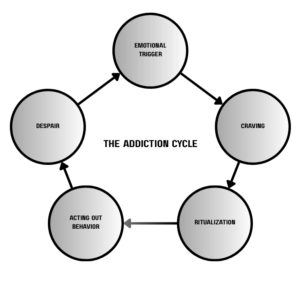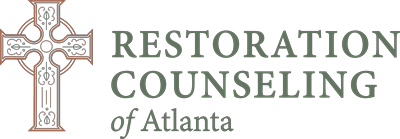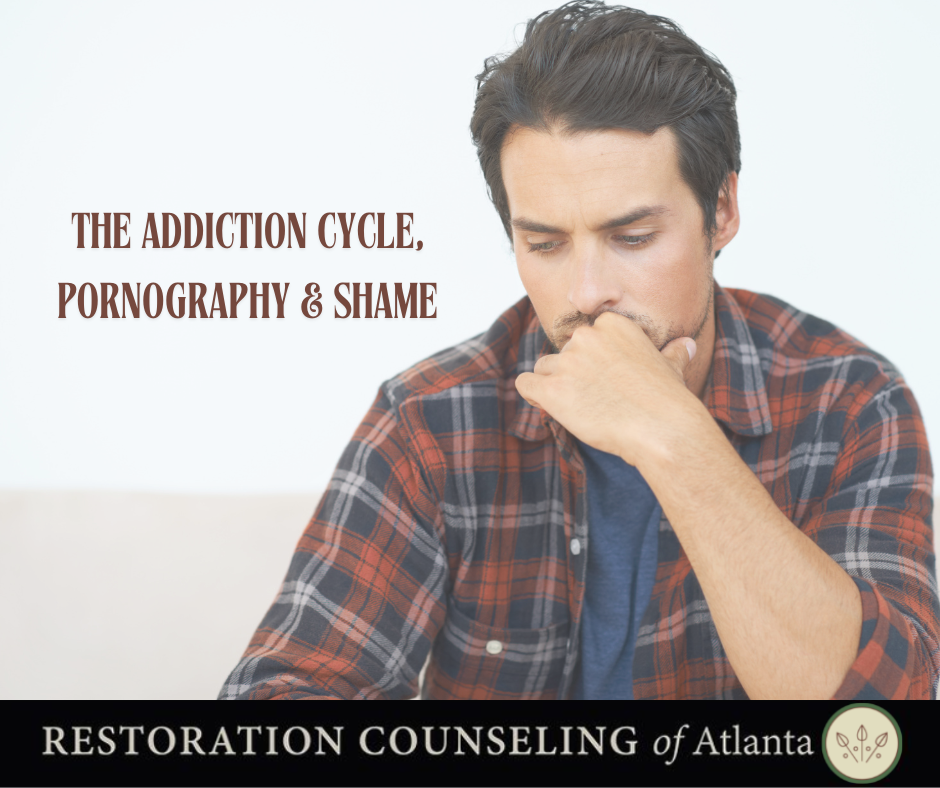In the fight against addiction, the addiction cycle is one of the most important concepts to understand and apply. Originally developed for sexual addiction by Dr. Patrick Carnes in his book Out of the Shadows: Understanding Sexual Addiction, the cycle is the process that keeps the individual trapped in a perpetual sequence of engaging in an unwanted sexual behavior or compulsion. What follows is a specific application of the cycle to the habitual use of pornography.
Many individuals have a heart set on abstaining from such destructive behavior like viewing pornography. Yet they find themselves powerless to it. How can this be? The answer to that question may include several different reasons. I believe the most important one to understand is shame. Let’s take a look at how the addiction cycle uses shame as its fuel.
The Cycle
Five elements make up this cycle: emotional trigger, craving (preoccupation), ritualization, acting out behavior, and despair.

Typically, the cycle begins with an emotional trigger. These days, there are many definitions one might use to explain what a “trigger” is. For the addiction cycle, we can understand emotional triggers to be any stimulus that leads to feelings of arousal or distress. Triggers can include emotions such as boredom, loneliness, anger, hunger, stress, tiredness, or overwhelmedness. Triggers can also be certain types of music, specific locations or people, movies and TV shows, and even memories. For an individual who has used pornography over an extended period of time, the behavior becomes a form of self-medication that “alleviates” the pain of emotional distress.
The emotional trigger will then lead to craving or preoccupation in the mind of the individual. This is where sexual fantasy or the desire to view pornographic material will begin. The process in which a trigger leads to craving can occur over the course of seconds or even weeks. It is important to note that it is here in the cycle when the individual must intervene with positive coping behaviors. Each individual will have different forms of coping behaviors that are helpful. Here are a few I’d suggest for everyone to incorporate: spiritual disciplines (reading God’s Word, prayer, worship, serving), calling or texting a friend, exercise, getting outside, hobbies, and breathing exercises. Get creative and come up with an ever-expanding list of healthy behaviors!
If left unaddressed, the craving or preoccupation will turn into ritualistic behavior. The term “ritualistic” refers to behaviors and decisions that have traditionally occurred before acting out a behavior or compulsion, with no fixed timeline, potentially lasting anywhere from hours to weeks. Ritualization behaviors may include fantasizing, scrolling on social media, and using electronic devices in isolation. Become a student of your triggers, cravings, and ritualization behaviors so that you can be aware of when you are in danger of acting out.
Engaging in compulsive behaviors, such as viewing pornography, happens when an individual succumbs to desires that were initiated during the craving and preoccupation phase. The emotional tension of arousal or distress is diminished with a release of neurochemicals like dopamine, but almost immediately after, the individual is faced with the reality that they have acted against their true values. Beliefs like “I am a bad person”, “I will never change”, “God rejects me”, and “There is no grace that can cover this” flood the individual’s thoughts. The individual’s self-concept becomes based on the behaviors that are against what they know to be good, and they fall into a depression-like state of despair. This is the trap.
Shame begins to work through the mind of the individual. Feelings of hopelessness and despair heighten, and the individual feels that the only way they can feel better is to act out again. The addictive cycle takes shape when the individual experiences shame and despair as emotional triggers. These lead to cravings for a release, from which they will make decisions to eventually view pornography again.
Stopping the Cycle
If you have found yourself in this cycle, I want you to know that there is hope. No longer does shame have to trap you. One of the first steps we must take to make a change is to understand the issue at hand. We must also understand that nothing changes if nothing changes. Repeatedly engaging in the addiction cycle will lead you to continue living in shame. That is no way to live!
“Do not be conformed to this world, but be transformed by the renewal of your mind, that by testing you may discern what is the will of God, what is good and acceptable and perfect.” (Romans 12:2).
As you strive towards renewal, confront how you have been conformed to this world. Learn how you are triggered, what cravings have become common in your mind, what rituals lead you to betray your values, and how the lies of shame trap you. Let this testing spur you on to pursue and discern God’s will for your life.
Finally, instead of letting shame govern your identity and lead you back into the cycle, let the message of grace through Christ be the alternative response to your pornography use.
For Further Study
- Romans 8:1
- 1 John 4:9-10
- Romans 5:1
- Colossians 1:22-23
- 2 Corinthians 5:17
References
Carnes, P. J. (2001). Out of the shadows: Understanding sexual addiction. Hazelden Publishing.

Written by: William Palmer
william@restorationcounselingatl.com; 678-534-3824, ext. 124
William has a passion for working with males of all ages who experience issues involving anger, anxiety, career, community, depression, identity, pornography, relationships, self-harm, suicidality, shame, spirituality, and trauma. He is also passionate about working with couples. William is trained in implementing Person-Centered Therapy, Cognitive Behavioral Therapy, Internal Family Systems, Emotion-Focused Therapy, and Play Therapy. He views individuals and their presenting issues through the lens of attachment theory, interpersonal neurobiology, and trauma-informed theories, all under the authority of God’s Word.

